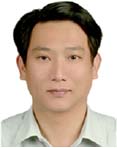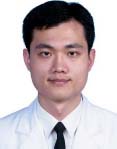|
|
|
| |
| ABSTRACT |
|
It is important to use short breaks to accelerate post-exercise recovery in sports. Previous studies have revealed that vibration can reduce post-exercise muscle soreness. However, there is still high heterogeneity in the effects of vibration on cardiovascular autonomic activities, and most studies to date have focused on high-frequency vibration. This study aimed to investigate the effect of low-frequency lower-body vibration (LBV) on post-exercise changes in heart rate variability and peripheral arterial tone. Ten men and 9 women aged 20 to 25 were recruited for this study. Each subject visited the testing room three times with at least 2 days in between. Each time, the subject received one of the three different vibration frequencies (0, 5, and 15 Hz) in a random order in the sitting position for 10 minutes. LBV was performed immediately after a static standing (control) test and 3-min-step test. Heart rate variability and digital volume pulse wave were recorded during the vibration phase (V1: vibration 0-5 minutes; V2: 6-10 minutes) and the recovery phase (Rc1: recovery phase 11-15 minutes; Rc2: 16-20 minutes). The result of digital pulse wave analysis showed that the reflection index (RI) under 15 Hz decreased during V1. Heart rate of the 15-Hz group also decreased during Rc1 and Rc2. According to the analysis of heart rate variability, low-frequency power/high-frequency power (LF/HF) decreased and normalized high-frequency power (nHF) increased during V2, Rc1 and Rc2 under 15 Hz and, during Rc2 under 5 Hz vibration. This study confirmed that the application of low-frequency LBV after exercise can reduce peripheral vascular tone, accelerate heart rate recovery, decrease cardiac sympathetic nerve activity, and promote parasympathetic nerve activity. The effect was more pronounced at 15 Hz than at 5 Hz. The findings provide a method to accelerate cardiovascular autonomic recovery after exercise. |
| Key words:
Vibration, pulse wave velocity, heart rate variability
|
Key
Points
- High-frequency (> 20 Hz) vibration applied at rest or during exercise was confirmed to facilitate peripheral vasodilation. On the other hand, the effect of low frequency (< 20Hz) vibration on the autonomic cardiovascular system applied in the post-exercise period was scarcely investigated and remained unclear.
- Application of low-frequency low-body vibration after exercise can reduce peripheral vascular tone, accelerate heart rate recovery, decrease cardiac sympathetic nerve activity, and promote parasympathetic nerve activity.
- The effect of low-frequency LBV on post-exercise cardiovascular change was more pronounced at 15 Hz than at 5 Hz.
|
Competitive sports are usually intense. The players go all out on the field, with very short breaks in between, such as soccer, basketball, and tennis. When recovery time is insufficient, the performance may decline as the game progresses. Therefore, fast post-exercise recovery is helpful for the players to maintain high performance on the court (Chang et al., 2020). Acceleration of autonomic cardiovascular system recovery after exercise also has other advantages. Augmentation of post-exercise vascular relaxation reduces cardiac afterload, and thereby cardiac work (Sugawara et al., 2001). Moreover, ventricular arrhythmia, prone to occur at a high sympathetic tone and during the recovery phase more than exercise (Gooch and McConnell, 1970), is likely to decrease as vagal activity reactivates faster. Previous studies have found that water immersion (de Oliveira Ottone et al., 2014), drinks (Karp et al., 2006), and low-intensity aerobic exercise (Martin et al., 1998) may facilitate post-exercise recovery. There are also numerous studies exploring the effect of vibration on post-exercise recovery. Most of them have focused on the musculoskeletal system, such as reducing delayed-onset muscle soreness (Timon et al., 2016) and muscle stiffness (Pournot et al., 2016). In contrast, the effect of vibration on the cardiovascular autonomic system has been investigated less frequently, and the results have been highly heterogeneous (Cheng et al., 2010; 2017; Sanudo et al., 2013). The effect can be different depending on different vibration frequencies, amplitudes, durations, regional or whole body, etc. When high-frequency (> 20 Hz) vibration is applied at rest (Lohman et al., 2011; Sanchez-Gonzalez et al., 2012; Wong et al., 2012) or during exercise (Figueroa et al., 2011; Kerschan-Schindl et al., 2001), arteriolar relaxation (Herrero et al., 2011; Kerschan-Schindl et al., 2001; Koutnik et al., 2014; Sanchez-Gonzalez et al., 2012; Wong et al., 2012) and skin microvascular expansion (Lohman et al., 2011) were observed by arterial pulse wave analysis and laser Doppler. There are few investigations concerning the effects of low-frequency (< 20 Hz) vibration on the cardiovascular system. One study found that 8 Hz lower-body vibration (LBV) accelerates the elimination of metabolic byproducts after exhaustive exercise (Cheng et al., 2017), but the mechanism is unclear. One of the hypotheses of the present study is that low-frequency vibration facilitates the dilation of peripheral arteries. Regarding the effect of vibration on cardiac autonomic responses, most studies have adopted high-frequency (>20 Hz) vibration after exercise, and the results were contradictory. One study showed that vibration (20 Hz and 36 Hz) failed to improve recovery of heart rate variability after exhaustive exercise (Cheng et al., 2010). However, another study found that vibration (25 Hz) could increase the total power of heart rate variability (HRV) after exercise (Sanudo et al., 2013). Different vibration protocols might explain the different results. In the former study, whole-body vibration (WBV) was implemented in the standing posture with 170 degree knee flexion for 10 minutes. In the latter, intermittent LBV in the sitting posture was applied for six minutes interspersed with a one-minute rest every minute. Additionally, low-frequency (8 Hz) vibration (seating on a chair and feet on a vertical vibrator) during the post-exercise period seemed to enhance vagal tone (Cheng et al., 2017). Based on the above studies, the parasympathetic neurological system may be activated under post-exercise low-frequency vibration (< 20 Hz). Therefore, we postulated that low-frequency vibration after exercise promotes parasympathetic activation and heart rate recovery, which is the second hypothesis of the present study. Moreover, low-body vibration in the sitting posture was adopted in the present study. This is a randomized crossover study that aimed to investigate the effect of post-exercise low-frequency vibration on arteriolar tone and cardiac autonomic activity, which were measured by digital volume pulse and heart rate variability. Three-minute step test, a simple and widely-used test to assess cardiovascular fitness (Liu et al., 2017) with good reliability and validity (Andrade et al., 2012; Borel et al., 2010; Pessoa et al., 2014), was employed. We hypothesized that low-frequency vibration facilitates cardiac parasympathetic activity, heart rate recovery, and peripheral arteriolar tone relaxation after exercise. SubjectsTen healthy male and 9 female subjects aged 20 to 25 years old were recruited. The exclusion criteria included those with cardiovascular diseases, those taking substances or drugs that interfere with the autonomic nervous system (such as cigarettes or alcohol), and those with any disease that may be associated with autonomic dysfunction (such as diabetes or systemic lupus erythematosus). Those who had contraindications for vibration, including pregnancy, urolithiasis, epilepsy, cancer history, recent implants (such as artificial joints, cornea, cochlea, intrauterine contraceptive device or catheters), surgery within three months, acute thrombosis or hernia, acute rheumatoid arthritis, or migraine, were also excluded. All subjects were provided with oral and written explanations of the whole procedure, and informed consent was from each subject obtained prior to the experiment. The study was performed in accordance with the Declaration of Helsinki and was approved by the Institutional Review Board of Chang Gung Memorial Hospital.
Experimental protocolA randomized design with a predetermined random number table was used to eliminate any order effects. Each subject visited the testing room three times with at least 2 days in between (Figure 1). At each visit, the participant received a control test (3-minute static standing), followed by an exercise test (three-minute step test) after a 30-minute rest. After each of the two tests, LBV was administered at one of the three frequencies in a random order (0, 5, and 15 Hz) for 10 minutes in a sitting posture. The LBV frequency was the same after the control and exercise tests within each visit. Vertical vibration was used at an amplitude of 4 mm (AV009, BODYGREEN Technology Co., Ltd, Taiwan). Additionally, the subjects rested in a sitting position for five minutes before performing the 3-minute static standing and step test. The three visits were completed within two weeks. Heart rate variability and digital volume pulse waves were recorded during the vibration phase (V1: vibration 0-5 minutes; V2: vibration 6-10 minutes) and the recovery phase (Rc1: recovery phase 11-15 minutes; Rc2: recovery phase 16-20 minutes). The experiment was conducted in a quiet and temperature- and humidity-controlled room (60% relative humidity, 23°C). The subjects were asked to step up on a wooden box with a height of 36 cm at a rate of 24 steps per minute. This protocol was expected to have participants reach 8.3 metabolic equivalent tasks (Jette et al., 1990). During the step test, a virtual motion system (Industrial Technology Research Institute, Taiwan) was applied to help synchronize the cadence accurately (Liu et al., 2017).
Heart rate variabilitySpectral analysis of HRV (HW6E, Medeia, USA) was employed to evaluate cardiac autonomic nervous system activity. In the heart rate variability measurement, power spectra were calculated by computing the magnitude squared of the fast Fourier transform based on data points obtained from 300 seconds of tachometer signal. The recorded ECG signals were retrieved to measure the consecutive R-R intervals, which are the time intervals between successive pairs of QRS complexes, by using software for the detection of R waves. The main outcome variables in the time domain were the standard deviation of normal to normal (SDNN); the main outcome variables in the frequency domain were low frequency (LF; 0.05-0.15 Hz), high frequency (HF; 0.15-0.40 Hz), the ratio of LF to HF (LF/HF), normalized LF (nLF) and normalized HF (nHF). Cardiac vagal activity is the major contributor to the HF component and nHF. The LF/HF ratio is considered to mirror sympathovagal balance or to reflect sympathetic modulation (Huang et al., 2009; Malik et al., 1996).
Digital volume pulseA digital volume pulse (Micro Medical Trace, PT1000) is a photoelectric plethysmograph that measures pulsatile changes in blood volume during the cardiac cycle. Two variables are recorded. The reflection index (RI) equals the amplitude of the reflection wave divided by the directly transmitted wave. The stiffness index (meters/second, SI) equals body height divided by the peak-to-peak time (pulse propagating time, PPT) (Laurent et al., 2006; Millasseau et al., 2006). The SI has been validated in different settings and diseases (Laurent et al., 2006; Millasseau et al., 2000; Millasseau et al., 2002; Millasseau et al., 2006). According to the device program, each value is yielded by averaging the values in a ten-second period. The recorded SI and RI values were processed to determine a final value according to the following rule. The first three SI values produced a median. If the other two values were within a 10% discrepancy of the median, the three values were averaged. If one or both values were beyond the 10% discrepancy, DVPs were continuously recorded until two new values were obtained. The five values were ranked by size and yielded a new median. The 2nd, 4th and median values were averaged if they were within a 10% discrepancy of the median. If not, two new values were consecutively obtained to produce seven values. The three RI values selected to be averaged were based on the simultaneous SI values that were chosen. Test-retest reliability was determined in 10 subjects on separate days. The intraclass correlation coefficients of SI and RI were 0.99 and 0.93, respectively.
Statistical analysisAll data were analyzed using IBM SPSS Statistics (version 22.0. Armonk, New York, USA) and were expressed as the mean ± standard error of the mean. Repeated measure ANOVA with Tukey’s post hoc test was used to compare the parameters obtained among the three different frequencies. A paired t-test was employed in 15 Hz vs. 0 Hz and 5 Hz vs. 0 Hz comparison. Statistical significance was accepted at p < 0.05.
Ten men and 9 women completed the study (Table 1). The mean age was 21.5 ± 0.3 years. In the waveform analysis of the digital volume pulse, repeated measure ANOVA with post hoc showed a significant difference in 15 Hz vs. 0 Hz. In the paired-T test between 15 Hz and 0 Hz, the RI value of the 15 Hz was lower than that in the 0 Hz in the V1 phase (Figure 2B). The PPT in 15-Hz was higher than that in 0 Hz in the V1 phase (Figure 2D). On the contrary, no difference can be found in the 5 Hz vs. 0 Hz comparison. Figure 3 shows the heart rate recovery and time domain of heart rate variability at pre-, during and postexercise (B, D) or static standing (A, C). Repeated measure ANOVA with post hoc showed a significant difference of HR value in 15 Hz vs. 0 Hz. In the paired-T test between 15 Hz and 0 Hz, the HR value of the 15 Hz was lower than that in the 0 Hz in the Rc1 and Rc2 phase (Figure 3B). Otherwise, no difference can be found in the 5 Hz vs. 0 Hz comparison. No difference of SDNN values can be found among different frequency comparisons (Figure 3D). In the comparison of frequency domain of HRV at pre- and post-exercise, repeated measure ANOVA with post hoc showed significant difference of LF/HF and nHF values in 15 Hz vs. 0 Hz. In the paired-T test between 15 Hz and 0 Hz, the LF/HF value of the 15 Hz was lower than that in the 0 Hz in the V2 and Rc1 phase (Figure 4B), and the nHF value of the 15 Hz was higher than that in the 0 Hz in the V2, Rc1 and Rc2 phase (Figure 4F). Additionally, in the paired-T test between 5 Hz and 0 Hz, the LF/HF value of the 5 Hz was lower than that in the 0 Hz in the Rc2 phase (Figure 4B) and the nHF value of the 5 Hz was higher than that in the 0 Hz in the Rc2 phase (Figure 4F). In contrast, no difference of nLF value can be found in repeated measure ANOVA test and paired-T test (Figure 4D). Although research on the effects of vibration on the autonomic nervous system is available, most previous studies used high-frequency (>20 Hz) vibration. To the best of our knowledge, this study is the first to investigate the effect of different low-frequency vibrations (<20 Hz) applied immediately after exercise on both small arterial resistance and cardiac autonomic nerve activity. This study found that the application of low-frequency vibration after exercise can reduce vascular tone, as indicated by a lower RI and longer PPT. Additionally, low-frequency vibration accelerates heart rate recovery, reduces sympathetic nerve activity (lower LF/HF) and facilitates parasympathetic nerve activity (higher nHF). This effect was evident when 15 Hz LBV was applied and was not observed at 5 Hz. Previous studies have shown that the application of high-frequency vibration promotes vasodilation during rest. Lohman et al. (2011) found that after 10 minutes of LBV at 50 Hz, cutaneous microcirculation in the calf area increases, as measured by laser Doppler. In addition, Sanchez-Gonzalez et al. (2012) used LBV at 25 Hz for 10 minutes and found that the pulse wave reflection magnitude decreased. Wong et al. (2012) also reported that LBV at 25 Hz for 10 minutes decreased the brachial-ankle and femoral-ankle pulse wave velocity. Furthermore, several studies have demonstrated that vibration causes peripheral vasodilatation during exercise. In Figueroa et al. (2011), one-minute exposure to 40 Hz WBV counteracted the increase in the augmentation index, an index of wave reflection intensity, induced by static squat. Kerschan-Schindl et al. (2001) found that after applying 26 Hz WBV for 9 minutes, popliteal artery blood flow and muscle blood volume of the quadriceps and gastrocnemius increased as assessed by Doppler sonography. The present study further confirmed that applying 15 Hz vibration immediately after exercise also exhibited vasodilatory effects. The mechanism of vasodilation caused by vibration may be related to endothelin. Nakamura et al. (1996) found that after 120 Hz local vibration by holding a vibration apparatus for 5 minutes, digital blood flow, which was measured by the thermal diffusion method, increased, and the concentration of serum endothelin was less than that of the nonvibration group. Reduced endothelin production may be related to inhibition of adrenoceptors by vibration (Ekenvall and Lindblad, 1986). Moreover, Maloney-Hinds et al. (2009) reported that the production of nitric oxide increased after receiving local vibration at 50 Hz for 5 minutes in healthy adults. Hence, endothelin secretion reduction and endothelial nitric oxide production may play a role in vibration-induced vasodilation. Acceleration of autonomic cardiovascular system recovery after exercise has advantages. First, faster HR recovery brings a larger heart rate reserve for the next bout, which helps maintain performance on the court (Chang et al., 2020). Second, ventricular arrhythmia tends to occur at a high sympathetic tone and during the recovery phase more than during exercise (Gooch and McConnell, 1970). Fast vagal reactivation after exercise helps reduce the likelihood of arrhythmia. Third, magnification of decline of total peripheral resistance reduces cardiac afterload, and thereby cardiac work (Sugawara et al., 2001). According to the present experimental findings, cardiac autonomic activity can be modulated by 10 minutes of 15 Hz LBV applied immediately after submaximal exercise (3-min step test), in which heart rate variability is enhanced and the autonomic balance moves toward parasympathetic tone. Another similar study by Cheng et al. (2017) showed that applying LBV at 8 Hz for 10 minutes after exhaustive incremental cycling exercise may promote cardiac parasympathetic tone, though the result was not statistically significant. The different results may be due to the small sample size (n = 12) in the previous study, or the difference in the vibration frequency or exercise intensity. Literature regarding the mechanism of how low-frequency vibration modulates post-exercise cardiac autonomic system lacks. In our study, it is possible that faster post-exercise HR and HRV recovery resulted from vasodilation of the lower body induced by 15Hz low-body vibration. Furthermore, there has been no consistent conclusion on whether the application of high-frequency vibration after exercise can promote the recovery of cardiac autonomic activity. Sanudo et al. (2013) found that applying 25 Hz intermittent LBV (six minutes of vibration interspersed with a one-minute rest every minute in the sitting posture) after exhaustive exercise can promote heart rate recovery and accelerate the increase in the total power of heart rate variability compared to the control group. According to Cheng et al. (2010), applying 10 minutes of WBV in the static standing position with knee flexion at 170° at 20 Hz or 36 Hz after maximal exercise did not facilitate the recovery of heart rate variability. We suggest that body posture during vibration is one of the reasons explaining the different results in the abovementioned two studies. Therefore, the sitting posture was adopted in our study during vibration. There are limitations in this study. First, the relative exercise intensity was not identical in each subject, as a 3-minute step test was employed. Caution is required in interpreting the results. Therefore, the main findings of the current study are derived from self-comparisons. Second, the 3-minute step test is roughly a moderate-intensity aerobic exercise for participants. Care should be taken in applying the findings to more exhaustive exercises. Low-frequency LBV applied in the sitting posture after submaximal exercise reduces small artery resistance, accelerates heart rate recovery, attenuates sympathetic nerve activity, and promotes parasympathetic nerve activity. The effect is more pronounced at 15 Hz than at 5 Hz. The findings provide a method to accelerate cardiovascular autonomic recovery after exercise, which can be helpful to maintain exercise performance and applicable in the field of competitive sport.
| ACKNOWLEDGEMENTS |
The authors would like to acknowledge the assistance of faculty from the department of Physical Medicine & Rehabilitation, Chang Gung memorial hospital. This work was supported by the Chang Memorial Hospital at Linkou (CMRPG3K0351). The experiments comply with the current laws of the country in which they were performed. The authors have no conflict of interest to declare. The datasets generated during and/or analyzed during the current study are not publicly available, but are available from the corresponding author who was an organizer of the study. |
|
| AUTHOR BIOGRAPHY |
|
 |
Kuo-Cheng Liu |
| Employment: Department of Physical Medicine and Rehabilitation, Chang Gung Memorial Hospital |
| Degree: MD |
| Research interests: Physical medicine and rehabilitation, sport medicine, cardio-pulmonary rehabilitation. |
| E-mail: monhh159@gmail.com |
| |
 |
Jong-Shyan Wang |
| Employment: Department of Physical Medicine and Rehabilitation, Chang Gung Memorial Hospital |
| Degree: PhD. |
| Research interests: Exercise physiology, cardiovascular physiology. |
| E-mail: s5492@mail.cgu.edu.tw |
| |
 |
Chien-Ya Hsu |
| Employment: Chang-Gung Memorial Hospital, Taipei, Taiwan |
| Degree: MD. |
| Research interests: Muscle oxidative capacity, vibration, NK cells, cytokines, autoimmune disease. |
| E-mail: chanchsu@icloud.com |
| |
 |
Chia-Hao Liu |
| Employment: New Taipei City Municipal Tucheng Hospital (Build and Operated by Chung Gung Medical Foundation). |
| Degree: MS |
| Research interests: Rehabilitation, Physical Therapy, Exercise Physiology |
| E-mail: sky1123@hotmail.com |
| |
 |
Carl PC Chen |
| Employment: Department of Physical Medicine and Rehabilitation, Chang Gung Memorial Hospital |
| Degree: MD, PhD |
| Research interests: Regenerative medicine, geriatric medicine, intravenous laser therapy, cardiopulmonary rehabilitation, evoked potential, stroke rehabilitation, sports medicine, rehabilitation medicine, rehabilitation robotics. |
| E-mail: carlchendr@gmail.com |
| |
 |
Shu-Chun Huang |
| Employment: Department of Physical Medicine and Rehabilitation, Chang Gung Memorial Hospital |
| Degree: MD. PhD. |
| Research interests: Exercise physiology, cardio-pulmonary rehabilitation, thrombosis |
| E-mail: h0711@ms13.hinet.net |
| |
|
| |
| REFERENCES |
 Andrade C.H., Cianci R.G., Malaguti C., Corso S.D. (2012) The use of step tests for the assessment of exercise capacity in healthy subjects and in patients with chronic lung disease. Jornal Brasileiro de Pneumologia 38, 116-124. Crossref |
 Borel B., Fabre C., Saison S., Bart F., Grosbois J.M. (2010) An original field evaluation test for chronic obstructive pulmonary disease population: the six-minute stepper test. Clinical Rehabilitation 24, 82-93. Crossref |
 Chang S.C., Adami A., Lin H.C., Lin Y.C., Chen C.P.C., Fu T.C., Hsu C.C., Huang S.C. (2020) Relationship between maximal incremental and high-intensity interval exercise performance in elite athletes. PloS One 15, e0226313. Crossref |
 Cheng C.-F., Lu Y.-L., Huang Y.-C., Hsu W.-C., Kuo Y.-C., Lee C.-L. (2017) Effects of Low-Frequency Vibration on Physiological Recovery from Exhaustive Exercise. The Open Sports Sciences Journal 10, 87-96. Crossref |
 Cheng C.F., Hsu W.C., Lee C.L., Chung P.K. (2010) Effects of the different frequencies of whole-body vibration during the recovery phase after exhaustive exercise. Journal of Sports Medicine and Physical Fitness 50, 407-415. Pubmed |
 Darr K.C., Bassett D.R., Morgan B.J., Thomas D.P. (1988) Effects of age and training status on heart rate recovery after peak exercise. American Journal of Physiology 254, 340-343. Crossref |
 de Oliveira Ottone V., de Castro Magalhaes F., de Paula F., Avelar N.C., Aguiar P.F., da Matta Sampaio P.F., Duarte T.C., Costa K.B., Araujo T.L., Coimbra C.C. (2014) The effect of different water immersion temperatures on post-exercise parasympathetic reactivation. PloS One 9, e113730. Crossref |
 Ekenvall L., Lindblad L.E. (1986) Is vibration white finger a primary sympathetic nerve injury?. British Journal of Industrial Medicine 43, 702-706. Crossref |
 Figueroa A., Vicil F., Sanchez-Gonzalez M.A. (2011) Acute exercise with whole-body vibration decreases wave reflection and leg arterial stiffness. American Journal of Cardiovascular Disease 1, 60-67. Pubmed |
 Gooch A.S., McConnell D. (1970) Analysis of transient arrhythmias and conduction disturbances occurring during submaximal treadmill exercise testing. Progress in Cardiovascular Diseases 13, 293-307. Crossref |
 Herrero A.J., Menendez H., Gil L., Martin J., Martin T., Garcia-Lopez D., Gil-Agudo A., Marin P.J. (2011) Effects of whole-body vibration on blood flow and neuromuscular activity in spinal cord injury. Spinal Cord 49, 554-559. Crossref |
 Huang S.C., Wong M.K., Wang J.S. (2009) Systemic hypoxia affects cardiac autonomic activity and vascular hemodynamic control modulated by physical stimulation. European Journal of Applied Physiology 106, 31-40. Crossref |
 Jette M., Sidney K., Blumchen G. (1990) Metabolic equivalents (METS) in exercise testing, exercise prescription, and evaluation of functional capacity. Clinical Cardiology 13, 555-565. Crossref |
 Karp J.R., Johnston J.D., Tecklenburg S., Mickleborough T.D., Fly A.D., Stager J.M. (2006) Chocolate milk as a post-exercise recovery aid. International Journal of Sport Nutrition and Exercise 16, 78-91. Crossref |
 Kerschan-Schindl K., Grampp S., Henk C., Resch H., Preisinger E., Fialka-Moser V., Imhof H. (2001) Whole-body vibration exercise leads to alterations in muscle blood volume. Clinical Physiology 21, 377-382. Crossref |
 Koutnik A.P., Wong A., Kalfon R., Madzima T.A., Figueroa A. (2014) Acute passive vibration reduces arterial stiffness and aortic wave reflection in stroke survivors. European Journal of Applied Physiology 114, 105-111. Crossref |
 Laurent S., Cockcroft J., Van Bortel L., Boutouyrie P., Giannattasio C., Hayoz D., Pannier B., Vlachopoulos C., Wilkinson I., Struijker-Boudier H. (2006) Expert consensus document on arterial stiffness: methodological issues and clinical applications. European Heart Journal 27, 2588-2605. Crossref |
 Liu C.-H., Huang S.-C., Wang J.-S. (2017) Prediction of Peak Oxygen Consumption in Patients with Cardiac Disease using a 3 Minutes' Step Test Combined with Heart Rate Variability. Taiwan Journal of Physical Medicine and Rehabilitation 45, 75-87. |
 Lohman E.B., Bains G.S., Lohman T., DeLeon M., Petrofsky J.S. (2011) A comparison of the effect of a variety of thermal and vibratory modalities on skin temperature and blood flow in healthy volunteers. Medical Science Monitor 17, 72-81. Crossref |
 Malik M., Bigger J.T., Camm A.J., Kleiger R.E., Malliani A., Moss A.J., Schwartz P.J. (1996) Heart rate variability: Standards of measurement, physiological interpretation, and clinical use. European Heart Journal 17, 354-381. Crossref |
 Maloney-Hinds C., Petrofsky J.S., Zimmerman G., Hessinger D.A. (2009) The role of nitric oxide in skin blood flow increases due to vibration in healthy adults and adults with type 2 diabetes. Diabetes Technology & Therapeutics 11, 39-43. Crossref |
 Martin N.A., Zoeller R.F., Robertson R.J., Lephart S.M. (1998) The comparative effects of sports massage, active recovery, and rest in promoting blood lactate clearance after supramaximal leg exercise. Journal of Athletic Training 33, 30-35. Pubmed |
 Millasseau S.C., Guigui F.G., Kelly R.P., Prasad K., Cockcroft J.R., Ritter J.M., Chowienczyk P.J. (2000) Noninvasive assessment of the digital volume pulse. Comparison with the peripheral pressure pulse. Hypertension 36, 952-956. Crossref |
 Millasseau S.C., Kelly R.P., Ritter J.M., Chowienczyk P.J. (2002) Determination of age-related increases in large artery stiffness by digital pulse contour analysis. Clinical Science 103, 371-377. Crossref |
 Millasseau S.C., Ritter J.M., Takazawa K., Chowienczyk P.J. (2006) Contour analysis of the photoplethysmographic pulse measured at the finger. Journal of Hypertension 24, 1449-1456. Crossref |
 Nakamura H., Okazawa T., Nagase H., Yoshida M., Ariizumi M., Okada A. (1996) Change in digital blood flow with simultaneous reduction in plasma endothelin induced by hand-arm vibration. International Archives of Occupational and Environmental Health 68, 115-119. Crossref |
 Pessoa B.V., Arcuri J.F., Labadessa I.G., Costa J.N., Sentanin A.C., Di Lorenzo V.A. (2014) Validity of the six-minute step test of free cadence in patients with chronic obstructive pulmonary disease. Brazilian Journal of Physical Therapy 18, 228-236. Crossref |
 Pournot H., Tindel J., Testa R., Mathevon L., Lapole T. (2016) The Acute Effect of Local Vibration As a Recovery Modality from Exercise-Induced Increased Muscle Stiffness. Journal of Sports Science and Medicine 15, 142-147. Pubmed |
 Sanchez-Gonzalez M.A., Wong A., Vicil F., Gil R., Park S.Y., Figueroa A. (2012) Impact of passive vibration on pressure pulse wave characteristics. Journal of Human Hypertension 26, 610-615. Crossref |
 Sanudo B., Cesar-Castillo M., Tejero S., Nunes N., de Hoyo M., Figueroa A. (2013) Cardiac autonomic response during recovery from a maximal exercise using whole body vibration. Complementary Therapies in Medicine 21, 294-299. Crossref |
 Sugawara J., Murakami H., Maeda S., Kuno S., Matsuda M. (2001) Change in post-exercise vagal reactivation with exercise training and detraining in young men. European Journal of Applied Physiology 85, 259-263. Crossref |
 Timon R., Tejero J., Brazo-Sayavera J., Crespo C., Olcina G. (2016) Effects of whole-body vibration after eccentric exercise on muscle soreness and muscle strength recovery. Journal of Physical Therapy Science 28, 1781-1785. Crossref |
 Wong A., Sanchez-Gonzalez M.A., Gil R., Vicil F., Park S.Y., Figueroa A. (2012) Passive vibration on the legs reduces peripheral and systemic arterial stiffness. Hypertension Research 35, 126-127. Crossref |
|
| |
|
|
|
|

